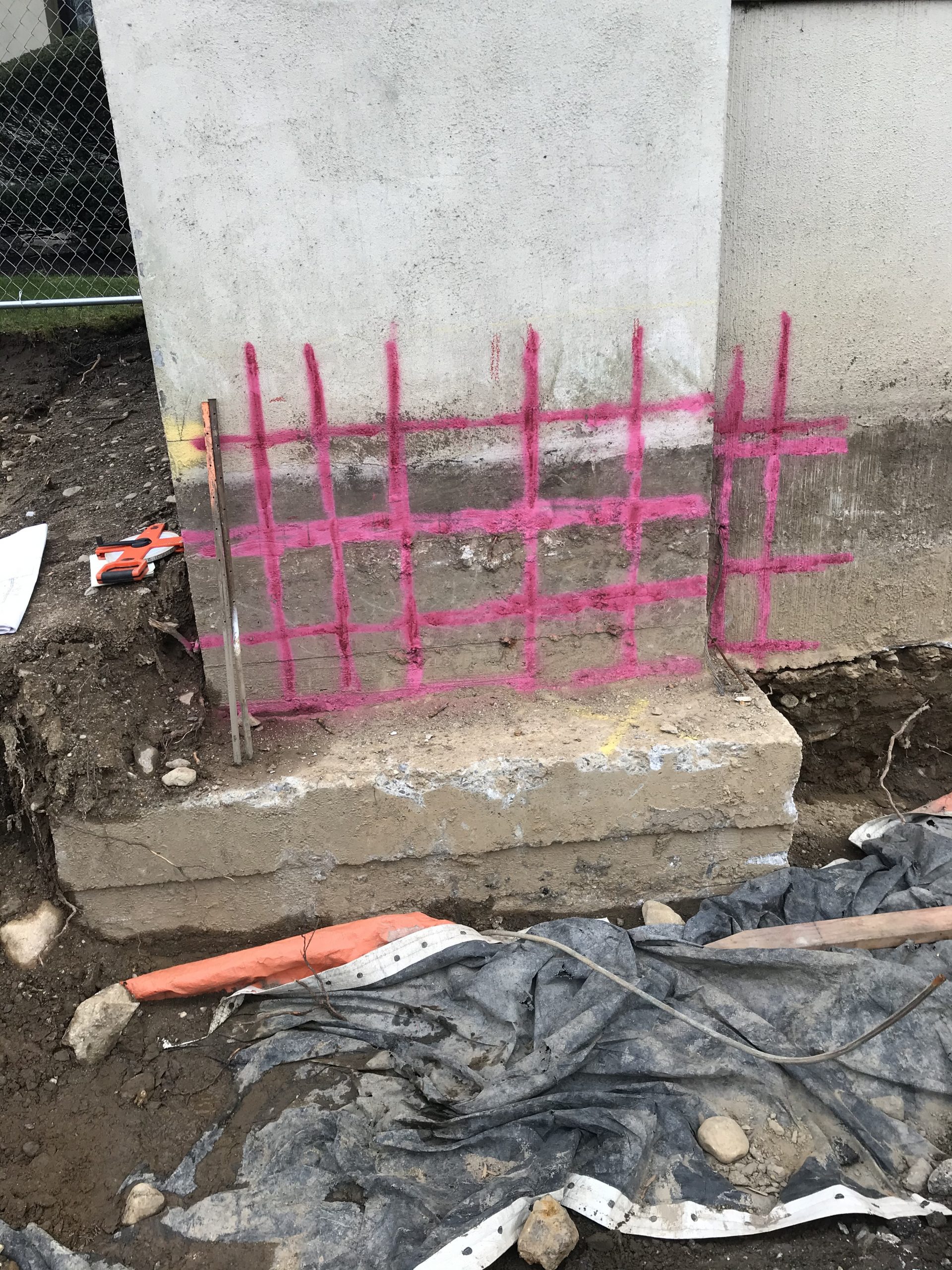Boost Construction Safety And Security with Specialist Concrete Scanning
Wiki Article
Elevate Your Building And Construction Refine With the Strategic Insights of Concrete Scanning for Enhanced Productivity
One such modern technology that has actually reinvented the construction industry is concrete scanning. By harnessing the strategic understandings offered by concrete scanning, building specialists can open a realm of boosted productivity and structured processes.
Advantages of Concrete Scanning
Enhancing task performance and security, concrete scanning provides a non-destructive method for discovering covert objects within concrete frameworks. By utilizing technologies such as ground-penetrating radar (GPR) and concrete x-ray imaging, building and construction groups can properly situate rebar, post-tension cords, electric channels, and other blockages before boring, reducing, or coring into concrete.The benefits of concrete scanning are many. Construction websites can be intricate settings, and knowing what exists under the surface area can stop accidents and injuries.
Additionally, concrete scanning promotes total job efficiency by improving operations and stopping rework. By recognizing possible problems beforehand, teams can change their strategies proactively, conserving time and sources in the long run. In significance, the adoption of concrete scanning modern technologies is a tactical investment that pays returns in terms of efficiency, cost-effectiveness, and safety and security.
Modern Technology Assimilation for Efficiency
Concrete scanning's capacity to enhance workflows and improve task effectiveness can be further maximized via tactical integration of cutting-edge modern technologies. By including Structure Information Modeling (BIM) software right into concrete scanning processes, construction groups can achieve a higher level of precision and control. BIM permits the development of 3D versions that provide thorough understandings right into the job, allowing far better decision-making and decreasing the likelihood of mistakes. Furthermore, the assimilation of Augmented Reality (AR) modern technology with concrete scanning can boost on-site visualization, allowing task managers and workers to overlay electronic details onto the physical environment in real time. This can assist in a lot more exact positioning of elements and boost interaction among staff member. The use of drones for aerial surveys in combination with concrete scanning can speed up data collection and analysis, allowing faster decision-making and progress monitoring. On the whole, the tactical integration of these innovations can considerably improve efficiency and productivity in building and construction jobs.Preventing Expensive Mistakes
How can thorough interest to detail during concrete scanning procedures help construction groups in avoiding pricey mistakes? Concrete scanning plays a crucial function in determining possible problems prior to they intensify into costly mistakes. By utilizing sophisticated scanning technologies such as Ground Penetrating Radar (GPR) and electro-magnetic induction, building and construction groups can properly detect rebar, energies, spaces, and various other obstructions within concrete structures. This degree of accuracy allows job supervisors to make enlightened choices relating to the design and design of their construction strategies, reducing the risk of unexpected damage to important facilities during the building procedure. In addition, concrete scanning aids in guaranteeing architectural honesty by recognizing weaknesses or problems in the concrete beforehand, enabling prompt repair work and alterations. By proactively addressing these issues, building teams can avoid costly mistakes such as rework, delays, or security hazards that may emerge from overlooked inconsistencies blog in the concrete framework. Eventually, spending in comprehensive concrete scanning procedures proves to be a cost-efficient technique use this link over time, conserving both time and resources while enhancing general project effectiveness and top quality.Enhancing Job Management
Careful attention to information throughout concrete scanning processes not only helps in preventing expensive mistakes yet likewise lays a solid structure for efficient project monitoring in building endeavors. By integrating concrete scanning technology into task administration approaches, building teams can simplify workflows, improve interaction, and make sure that projects stay on track.Concrete scanning provides useful insights you can check here into the structural stability of existing aspects, enabling project managers to make enlightened decisions concerning design alterations or building sequences. This proactive method reduces the danger of unforeseen delays or remodel, inevitably conserving time and sources. Furthermore, the information obtained from concrete scanning can be incorporated right into Building Info Modeling (BIM) systems, allowing real-time collaboration and control amongst various stakeholders.
Additionally, concrete scanning helps job managers identify prospective risks or obstacles prior to they rise into bigger concerns, promoting a more secure workplace for all involved. With improved presence and accuracy given by concrete scanning innovation, project managers can effectively plan, check, and carry out construction tasks with greater effectiveness and confidence.
Maximizing Productivity
One key facet of maximizing efficiency is with the adoption of concrete scanning modern technology. By making use of ground-penetrating radar (GPR) and other scanning techniques, construction teams can accurately locate rebar, conduits, and other subsurface aspects, minimizing the risk of costly mistakes and delays during excavation and exploration.Additionally, accepting Building Info Modeling (BIM) software can considerably improve efficiency by developing in-depth 3D designs that enhance project visualization and coordination among various professions. BIM enables far better clash discovery, making it possible for concerns to be identified and dealt with prior to building and construction even starts, conserving time and resources in the future.
Implementing a lean construction approach, which concentrates on eliminating waste and optimizing efficiency across all job phases, is another efficient strategy for maximizing performance. By promoting collaboration, communication, and continual improvement, construction groups can work more cohesively in the direction of attaining job objectives in a effective and structured way.
Verdict
In final thought, the strategic application of concrete scanning in the construction procedure offers countless advantages, including enhanced performance, expense savings, enhanced project management, and improved productivity. By integrating this modern technology, construction groups can avoid expensive errors, simplify their procedures, and maximize their overall job result. Concrete scanning is an important device that can boost the construction process and cause even more lucrative and effective results.
Report this wiki page